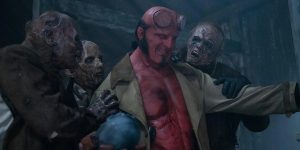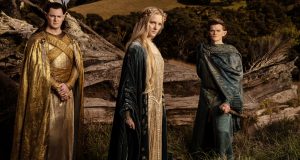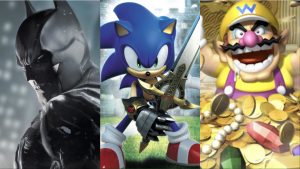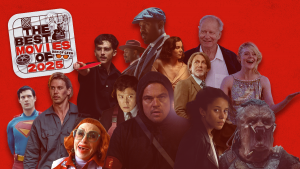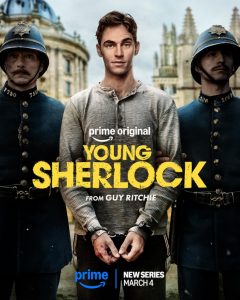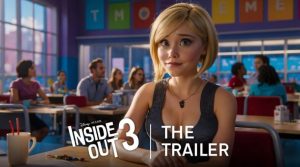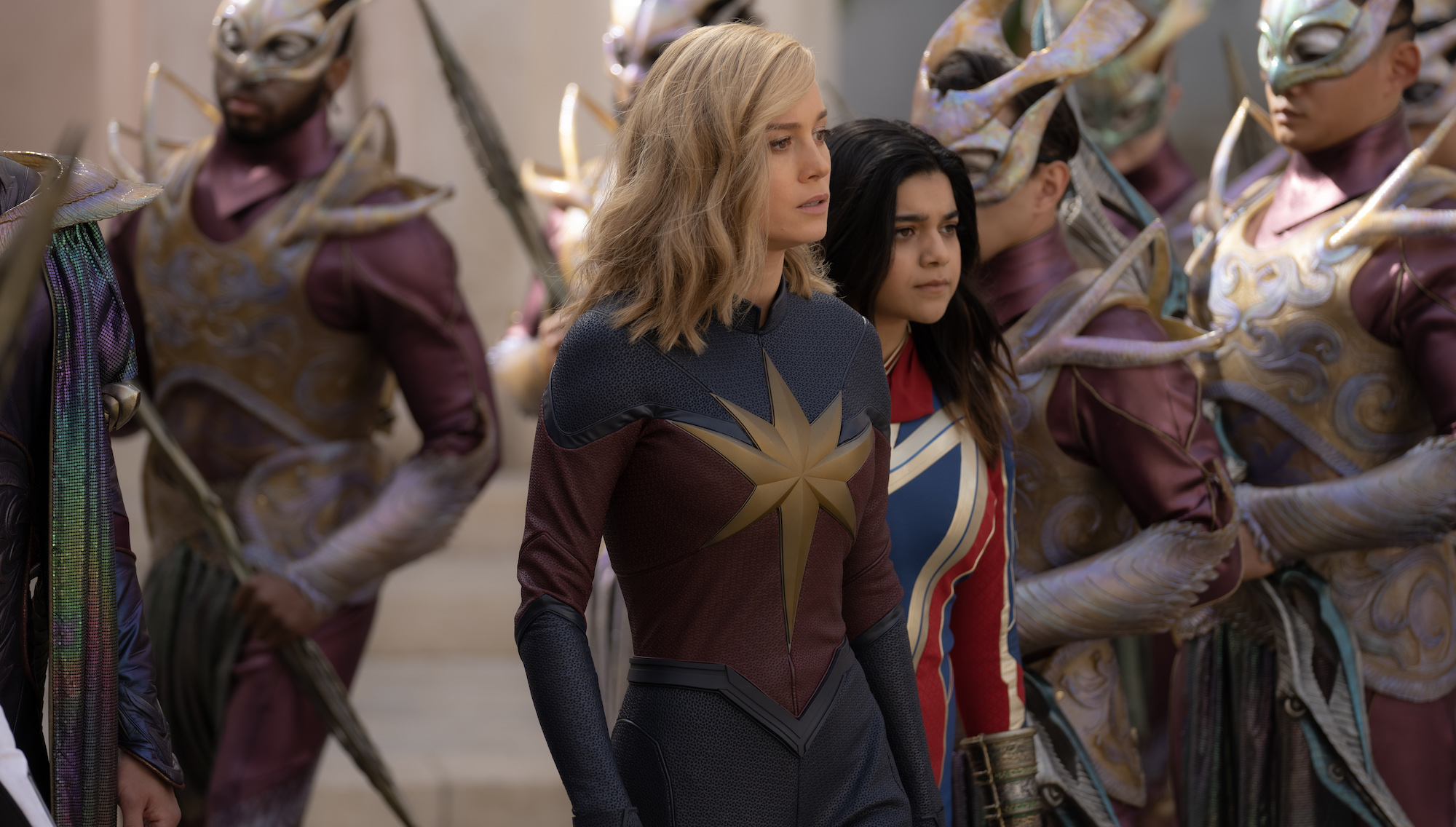
There is a scene early on in The Marvels, the 33rd installment in the Marvel Cinematic Universe, where Brie Larson’s Captain Marvel makes a triumphant return by gliding through the cosmos of outer space with her trusty alien cat, Goose, perched imperiously on her shoulder. The feline looks as if it were a Space Bastet. This teases an interesting movie; a space opera wherein the most powerful beings in the universe are a woman and her cat. Imagine the kind of zany adventures they could have if you committed to the bit?
Shortly afterward, there is another scene where a young woman who calls herself Ms. Marvel (Iman Vellani), but who is really a teen named Kamala Khan, fangirls hard upon discovering her idol, Captain Marvel, was just in her living room. You can guess the sputtering double takes and easy laughs that ensue, yet laugh you shall because of Vellani’s irrepressible and infectious glee. Imagine now the more common, but still effective, sitcom hijinks that could happen if you committed to this bit?
The Marvels is both of these movies. It is also neither of them. And as a consequence it fulfills to a tee the two formulaic poles which have driven nearly every Marvel Studios film since the beginning—yes, even back in the pre-Endgame glory days—and as a result seems to be finding the recipe’s limits 15 years later.
As a commercial exercise, the Marvel machine is very good at promising spectacular comic book wonderment with its miraculous characters and their mighty deeds, and yet as a constant, preemptive deflection, the products then ask audiences not to demand too much from the material. It undercuts any awe with relentless self-effacement and self-awareness. The shame of The Marvels is that when it intermittently commits to an idea or a setup for a scene or two, it can be genuinely laugh-out-loud funny for far more organic reasons, such as the bubbly chemistry Vellani has with all of her co-stars, including the cat. But this installment is a particularly mechanical attempt to rush back toward the formula’s primary twin engines, and after all these years, it’s starting to look like the gears are coming off.
This applies to how the movie attempts to awkwardly weld its characters and story threads together, too, by way of a clever but underwritten setup. Due to comic book mumbo jumbo that the movie is no more seriously concerned with explaining than this review, a space MacGuffin (magic bracelets subbing in for the gauntlets of yesteryear) has caused a triumvirate of Marvel heroines to be caught in a Freaky Friday triad. When Captain Marvel uses her powers on a distant moon, she winds up in suburban New Jersey! When Ms. Marvel does the same thing, she’s now in space! And when astronaut Capt. Monica Rambeau (Teyonah Parris), the third and least well-served by the script of the film’s three leads, likewise goes marvelous, she too is displaced to wherever Kamala or Larson’s Carol Danvers just were. It’s superhero Three Card Monte.
This is an amusing idea, and by the time that a wackadoo montage plays with the gimmick to the beat of the Beastie Boys’ “Intergalactic” halfway through the picture (if it worked for the Guardians of the Galaxy…), it gets pretty fun. But by and large, the effect is clunky and key details feel like they were left on the cutting room floor, as it is never clear why it is that when any of the women use their powers, they sometimes get teleported to where the other ones are, and in other sequences they do not. Even the first action scene, which introduces the concept, feels cut to the bone in post-production with the mechanics of how, or even who, they’re fighting left incomprehensible.
But despite being a movie leadened by an overabundance of exposition, this isn’t really a plot movie. The main villain, Zawe Ashton in the thankless role of Dar-Benn, is obligatory as a Kree alien insurgent who wants revenge on Captain Marvel; the emotional speeches about Carol and Monica’s estrangement following 2019’s Captain Marvel are perfunctory; and even the typical third act beat where our motley heroes briefly contemplate breaking up is rushed through and abandoned mid-scene. Instead of committing to any one bit, The Marvels is a collection of them, stitched together possibly by a threadbare script credited to Nia DaCosta, Megan McDonnell, and Elissa Karasik or (more likely) a post-production Frankenstein situation where a combination of ideas are thrown at the wall by reshoots and reedits.
Still, it is worth noting that some of those ideas work and that the movie is far from the nadir of the MCU. The best sequence in the movie, in fact, is one of the more inventive things the studio has done in the 2020s, with the trio of superheroes winding up on a planet where all the aliens communicate via song. With a spark of creative inspiration, director DaCosta pulls liberally from the aesthetic of Bollywood musicals as well as old school Broadway toe-tappers when Carol is forced to reveal she can carry a tune while practicing sung-through diplomacy with a prince (Park Seo-joon). That also could’ve been a movie!
Similarly, the chemistry between the three leads crackles when the script stops forcing exposition dumps on the actresses and finally just lets Larson, Parris, and Vellani bounce off each other. There is an air of resignation in early sequences where Larson is acting off blue screens and possible regrets of what she signed on for, but she comes alive when the movie just lets her play off Vellani nerding out as her biggest fan. More than anything, The Marvels probably should’ve been that movie—the one where the kid sidekick gets to finally ride along with her hero. Unfortunately, we only get that moment, where Larson and Vellani interact as humans, for a scene. It’s also the best non-musical one in the film.
There will undoubtedly be recriminations about why this film didn’t work overall, creatively or apparently commercially, but to be clear, it is not the worst Marvel movie. It’s not even the worst Marvel movie this year, with The Marvels being lightyears better than the soulless pits of CGI hell that was Ant-Man and the Wasp: Quantumania. In fact, you can feel DaCosta’s hand most tangibly in how many sequences during the film’s first two acts aren’t shot in front of blue screens where the details can be figured out later. Much of the film is shot on actual sets, the early action sequences rely on at least a modicum of physicality that isn’t animated, and when DaCosta gets her musical sequence, the art direction and style of the movie finally hums.
But this doesn’t particularly feel like a film made by the same hand that helmed the superb Little Woods and the solid Candyman reimagining a few years ago. It doesn’t particularly feel like a film made by anyone but a talented crew of artisans. However, that’s long been intended as a feature instead of a bug at Marvel, a company that only seems to give a few favorite directors a bit of slack on the leash.
So no, The Marvels isn’t bad for the MCU, or among the studio’s weakest efforts. It’s just another straight down the middle product that ignored each and every opportunity it had along the way to be something better. If that no longer is working for audiences, perhaps it’s time to rethink the formula.
The Marvels is in theaters Friday, Nov. 10.
The post The Marvels Review: This Is No Cure to Superhero Fatigue appeared first on Den of Geek.
